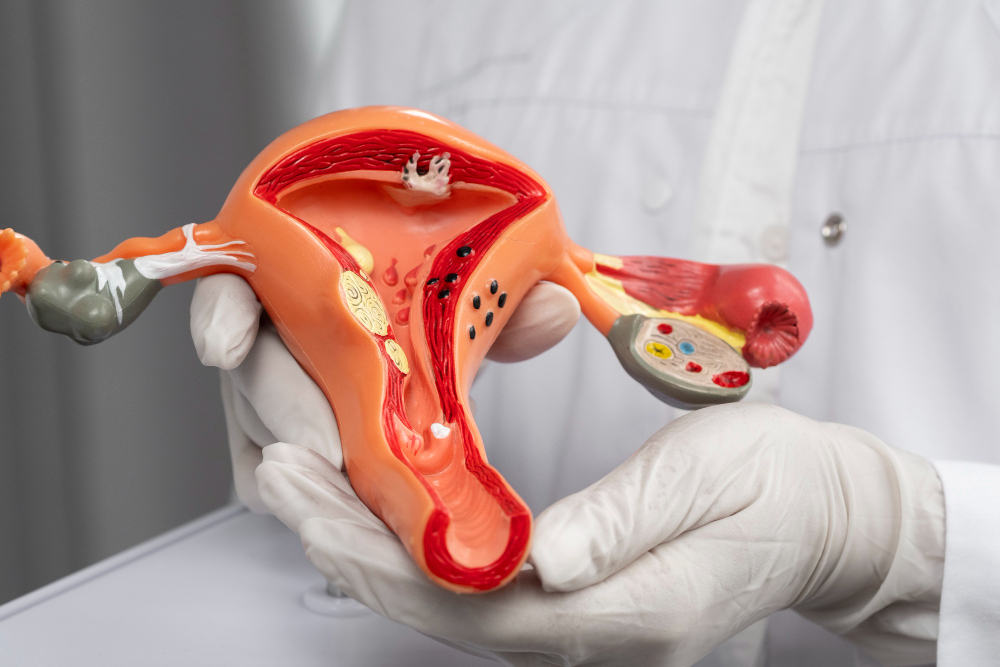What You Need to Know About Ovarian Cyst

Causes of Ovarian Cysts
The ovaries contain follicles that produce the female hormones estrogen and progesterone. They also open up during ovulation to release eggs. If the follicle does not release the egg, it becomes a functional cyst.
There are 2 types of functional cysts:
- Follicular Cysts: When a follicle does not open up to release the egg within, the egg continues to grow and the follicle becomes a cyst.
- Corpus Luteum Cysts: Once the egg is released, follicles begin producing estrogen and progesterone. In some cases, the opening from where the egg was released becomes blocked and the fluid builds up and the follicle becomes a cyst.
Functional cysts are the most common and normally produce no symptoms and disappear on their own within 2 or 3 menstrual cycles. No treatment is required.
The other types of cysts are:
- Cystadenomas: These cysts develop from cells that are on the outer surface of the ovaries and may be filled with mucus or water. These cysts can often grow to a large size.
- Dermoid Cysts: Also known as teratomas, these cysts form the cells that make the eggs within the ovaries. These cysts may contain tissue in the form of teeth, skin or hair.
- Endometrioma: When cells similar to those that line the inside of the uterus develop on the outer surface, the condition is known as endometriosis.
Both cystadenomas and dermoid cysts can grow to a size large enough to push the ovaries out of position. This can cause the ovaries to become twisted resulting in severe pain. The flow of blood to the ovaries may also be affected.
Also Read: The Importance of Regular Gynaecological Examinations
Symptoms of Ovarian Cysts
As already stated, in most cases, ovarian cysts disappear on their own and result in no symptoms. However, in some cases, they may cause:
- Intermittent pelvic pain that can take the form of either a sharp stabbing pain or a dull steady ache.
- Feelings of heaviness, fullness or pressure in the abdomen.
- Abdominal bloating.
A doctor consult is a must if you have ovarian cysts and experience the following:
- Severe pain with fever or nausea/vomiting.
- Sudden sharp stabbing pain in the abdomen or pelvic region.
- Rapid breathing, cold clammy skin, weakness, or lightheadedness.
Potential Risks
Two common major complications arise from ovarian cysts.
- A cyst can burst open and cause both severe pain as well as bleeding inside the pelvis. As a cyst grows, this danger increases. Any form of strenuous physical activity, including sex, also increases the risk of rupture.
- A large cyst could cause the ovary to move out of its normal position which may result in the ovary becoming twisted. In such cases, sudden severe pain in the pelvis, nausea and vomiting are common.
- If an ovarian cyst develops after menopause, the risk of cancer is high. If that is the case, surgery to remove the uterus, cervix, fallopian tubes and ovaries may be required and this will have to be followed by radiation or chemotherapy.
Diagnosing Ovarian Cysts
Pelvic examination and ultrasound are the most frequently used tests for diagnosing ovarian cysts. Other tests that may be used include:
- Laparoscopy during which a thin tube with a light and camera at the end is inserted via a small incision to enable the doctor to see the ovaries and any cysts that may be present.
- If an ovarian cyst appears to be solid, the risk of ovarian cancer increases and a cancer antigen or other blood tests may be ordered.
- Because corpus luteum cysts are common during pregnancy, a pregnancy test may be ordered.
Also Read: How To Find The Best Gynecologist
Treating Ovarian Cysts
There are 3 stages in the treatment of ovarian cysts:
- Observation: In some cases, if there are no obvious symptoms and imaging has shown the cysts to be small and fluid-filled, the doctor may feel that it is best to wait for a few menstrual cycles to see if the cysts disappear on their own. This will be confirmed with more imaging tests and if the cysts have disappeared, nothing further needs to be done.
- Medication: Hormonal contraceptives stop ovulation and are an effective method of stopping the development of further cysts. However, this will not treat any existing cysts that do not disappear on their own.
- Surgery: If a cyst is large and is not a functional cyst, or if it is increasing in size or is causing pain and discomfort, surgery will often be advised. It may be possible to remove the cysts without removing the ovary, but in some cases, the ovary that has the cysts may have to be removed. If the cysts are not too large, surgery may be possible using minimally invasive techniques. If the cysts are large, a traditional larger incision procedure may be required.
While ovarian cysts typically need no treatment, if you have any discomfort or any symptoms that may be associated with ovarian cysts, it is important to get examined to diagnose the condition without delay. If cysts are present, the earlier treatment is begun, the faster and more successful the result. To be sure of getting a diagnosis from the best doctors using state-of-the-art diagnostic technology, visit the obstetrics and gynaecology department of a leading multispecialty hospital. The benefit here is that in addition to cutting-edge treatment, other specialization consults if needed will be available at the same hospital.
- Apr 15, 2024
